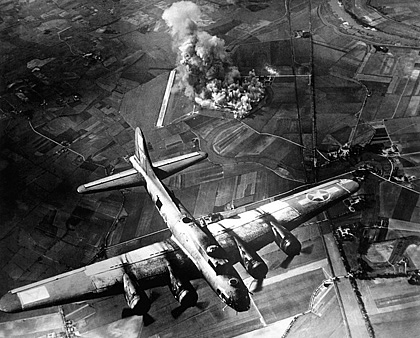|
|||
 |
|---|
Facts About Germany German History German Recipes |
The Bombing of Dresden On the evening of February 13, 1945, a series of Allied firebombing raids begins against the German city of Dresden, reducing the "Florence of the Elbe" to rubble and flames, and killing many thousand civilians. The bombing of Dresden in February 1945 has remained one of the more controversial aspects of World War II.
In four raids between 13 and 15 February 1945, 722 heavy bombers of the British Royal Air Force (RAF) and 527 of the United States Army Air Forces (USAAF) dropped more than 3,900 tons of high-explosive bombs and incendiary devices on the city. The bombing and the resulting firestorm destroyed over 1,600 acres (6.5 km2) of the city centre. Between 22,700 and 25,000 people were killed. The attacks on Dresden effectively destroyed over 12,000 buildings in the city's old town and inner eastern suburbs. Among the military targets destroyed were the Wehrmacht's headquarters and several military hospitals. In addition, several factories were badly damaged or destroyed.  Over ninety percent of the city centre was destroyed. The raids had destroyed 24 banks, 26 insurance buildings, 31 stores and retail houses, 640 shops, 64 warehouses, 2 market halls, 31 large hotels, 26 public houses, 63 administrative buildings, 3 theaters, 18 cinemas, 11 churches, 6 chapels; 5 other cultural buildings, 19 hospitals including auxiliary, overflow hospitals, and private clinics, 39 schools, 5 consulates, the zoo, the waterworks, the railways, 19 postal facilities, 4 tram facilities, and 19 ships and barges. The Wehrmacht's main command post in the Taschenbergpalais, 19 military hospitals and a number of less significant military facilities were also destroyed. Almost 200 factories were damaged, 136 seriously damaged (including several of the Zeiss Ikon precision optical engineering works), 28 with medium to serious damage, and 35 with light damage. It was the single most destructive bombing of the war and all the more horrendous because little, if anything, was accomplished strategically, since the Germans were already on the verge of surrender.
Post-war discussion of whether or not the attacks were justified has led to the bombing becoming one of the moral causes célèbres of the war. A 1953 United States Air Force report defended the operation as the justified bombing of a military and industrial target, which was a major rail transport and communication centre, housing 110 factories and 50,000 workers in support of the German war effort. Several researchers have claimed that not all of the communications infrastructure, such as the bridges, were targeted, nor were the extensive industrial areas outside the city centre. Critics of the bombing argue that Dresden, sometimes referred to as "Florence on the Elbe" (Elbflorenz), was a cultural landmark of little or no military significance, and that the attacks were indiscriminate area bombing and not proportionate to the commensurate military gains.
After the war, and again after German reunification, great efforts were made to rebuild some of Dresden's former landmarks, such as the Frauenkirche, the Semperoper (the Saxony state opera house) and the Zwinger Palace (the latter two were rebuilt before reunification). Google |
|
Powered by Website design company Alex-Designs.com



